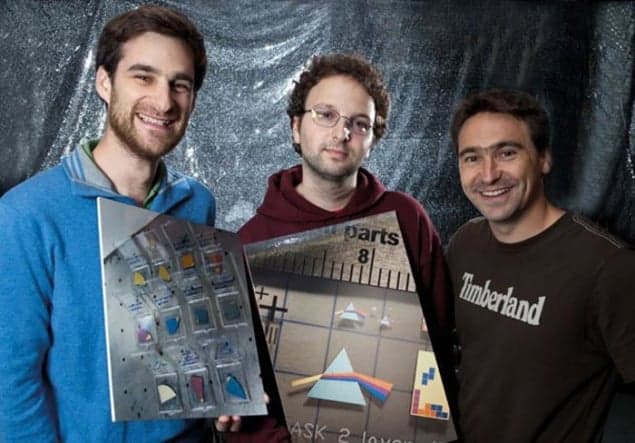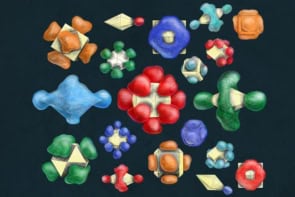
Researchers at Harvard University in the US have made a new type of optical coating that appears to change colour when its thickness is varied by just a few nanometres. The film, which is less than 20 nm thick, could be used to customize the colour of metal surfaces – a phenomenon that could not only be exploited to make pretty jewellery, but also a host of technologically advanced devices, including ultrathin light detectors and filters, displays, modulators and even solar cells.
Conventional dielectric optical coatings, which are a key component of almost every optical device, are typically made of layers of transparent (or “lossless”) material, with each layer being at least a quarter wavelength of light in thickness. The new ultrathin optical coatings made by Federico Capasso’s team are different in that they comprise nanometre-thick, and nearly opaque, highly light-absorbing dielectric materials, such as semiconductors. The researchers have shown, for example, that adding a 7 nm layer of germanium to the surface of a gold sample changes its colour from gold to pink. Adding another 4 nm layer makes it violet, and another 4 nm turns the coating dark blue (4 nm is less than 15 atoms thick).
The effect is similar to what we see when there is a thin film of oil of the road on a wet day and we see many different colours, explains Capasso. The colours appear thanks to interfering light waves as they pass through the oil into the water below and then are reflected back up. Some wavelengths of incident and reflected light constructively interfere with one another and are “boosted”, while others destructively interfere and are absorbed.
Dramatic colour shifts
“In our case, the oil layer is ‘replaced’ by the light-absorbing germanium coating,” Capasso says, but astonishingly a difference of only a few atoms’ thickness across the coating is enough to produce the dramatic colour shifts we observed. “By changing the thickness of the films we change the interference conditions and thus can control which wavelengths will end up reflected and which will end up absorbed in the thin layer. As a result, the colour of the coating changes.”
The researchers have also already tried applying the germanium coating to a silver surface, which then appears gold at certain thicknesses as well as a range of pastel colours.
Exploring their artistic side
“While we plan to continue exploring the artistic side of this work – producing brilliant colours, rainbows and so forth – we are most excited about the potential technology applications,” team member Mikhail Kats says. “There is a whole host of device applications that employ light-absorbing semiconductor layers, including light detectors, displays, modulators and solar cells. If we could make any of these devices much thinner and more efficient, that would be very good news indeed.”
The team has filed a patent application for its coating process, which is itself fairly simple – involving standard lithography and physical vapour-deposition techniques – and is now looking to commercialize the new technology.
The work is described in Nature Materials.




